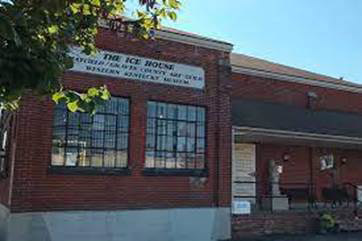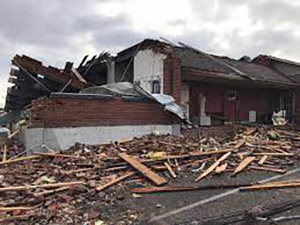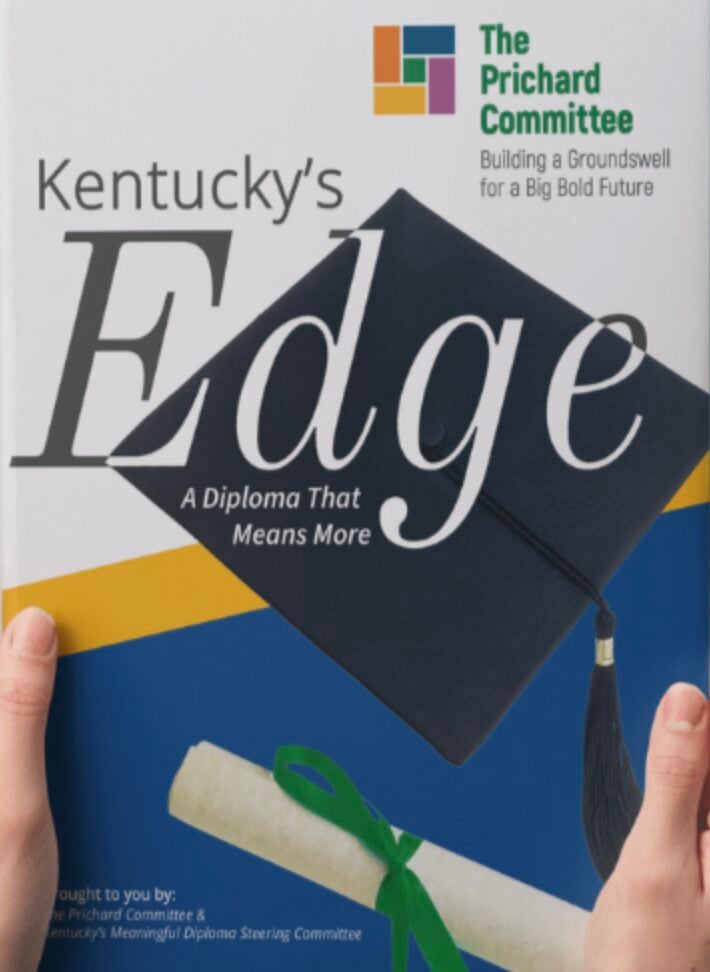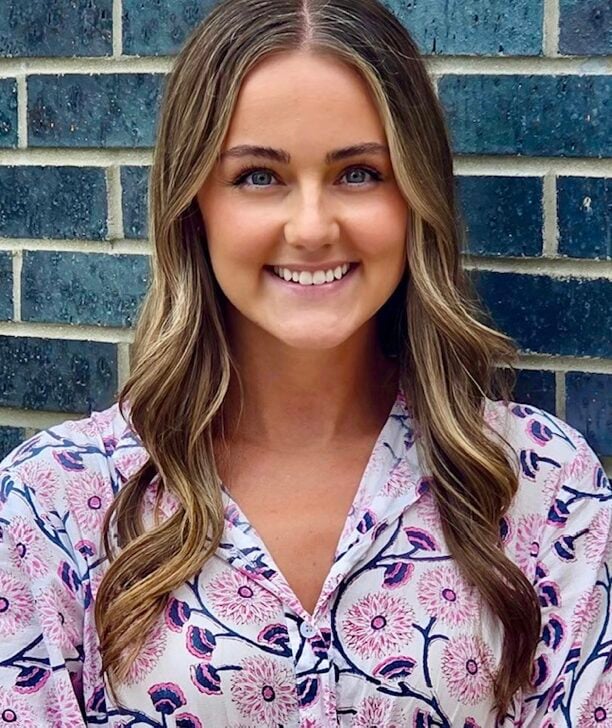Between November 13 and December 18, the Ice House Gallery in downtown Mayfield was exhibiting “Impressions,” an array of creative works by artists from the region. A solid brick structure, the historic building housed a museum of local memorabilia, the Mayfield-Graves County Tourism Office, and the local art guild.
Inside, the stark white gallery walls pulsed with the energy of “Impressions.” A stunning photograph of a sunflower, a delicate drawing of teatime, a rugged, 3-dimensional accent table of spalted maple and cedar, were just three of many works on view. A swirl of dreamy pastels, the Best of Show – “Hula Hoops” by John McLaren — depicted a carefree cluster of people whirling and twirling in mid-air.

Nanc Gunn, gallery director, remembers December 10 clearly. All day, news reports warned that a combination of unique factors could lead to unstable weather.
“I knew to close early,” Gunn recalls.
In case of a lightning strike, she disconnected the computers before locking the doors for the night. She headed home, about 8 miles north of town. Later, when the power went out, she and her husband tracked the storm by watching its progress on her phone.
“We saw it on the radar and held our breath. In fifty seconds,” she said, “it went right through Mayfield.”
The next morning, the couple drove to town to survey the damage. Enroute, things looked normal until they reached the crest of the bridge arching over the train tracks. The landscape was topsy-turvy; the world turned upside-down.
“Everywhere we looked, everything was destroyed, every telephone pole. Everything.”
Even months later the shock is evident in Nanc Gunn’s voice. When nails and other debris clogging the roads made it impossible to drive, she and her husband ended up walking the last two blocks to the Ice House.
“It took a direct hit,” she said. “The whole building was gone. The artwork was gone.”

It looked like the building had imploded. “The art had been taken out through the top, sucked out like a vacuum cleaner,” Gunn explained.
The remnants were covered in mud, some smashed and distorted, almost unrecognizable. In an instant of panic, Gunn thought of the irreplaceable painting in her office by Helen Le France, the noted Mayfield artist whose work had found homes all over town and also into the hands of celebrity collectors like Bryant Gumbel and Oprah Winfrey.
Gunn’s husband managed to climb over the rubble and get to the painting, which had been punctured in three places. Although ravaged, it was salvageable. In one of many examples of the region pitching in to help, Paducah’s School of Art and Design repaired the painting.
Upon hearing of the Ice House disaster, Lexie Millikan, executive director of Paducah’s Yeiser Art Center, sent a message to Gunn: “What can we do?”
“We were willing to help in any way possible. Our staff went into helping mode,” Millikan recalled.
Cases of bottled water left over from an opening reception were sent to Mayfield. That was the first gesture. The two women became friends and came together to do what was needed for the Ice House – now without a physical home — to survive.

All over the country, non-profits had been struggling for almost two years to survive the COVID pandemic, but the giant tornado and its aftermath presented mind-boggling obstacles.
When the enormity of the responsibility hit, Gunn confessed, “It was pretty miserable.”
There were insurance claims to process and art to be returned to artists. The programming schedule that included activities for the whole year was in tatters. A GoFundMe page was created and the Yeiser shared it with their contacts to spread the word and secure support for the Mayfield-Graves County organization.
Since the Mayfield guild does not own The Ice House, the future is uncertain, but there is an upbeat note in Nanc Gunn’s voice as she looks ahead.
“It’s all about programming,” she said, and then she listed the various events that were still on the docket but slated to occur in different locations.
“We found homes for all of them,” she said, referring to programs that had been planned well in advance of the tornado.
Organizations volunteered their facilities for workshops, classes, and exhibits. The Graves County Library stepped forward, for example, as did the County Extension Office, and the Graves County High School Performing Arts Center.
“People are coming out of the woodwork, offering space,” Gunn exclaimed. “We’re traveling to places we’ve never been before.”
Rising from the ruins is a long-term ordeal, however, and small rural organizations face different challenges than their urban counterparts.
“Other human needs are more pressing than the arts,” Lexie Millikan admits, but the impact of the arts on the region’s economy needs to be taken into account.
In an effort to provide resources and support to arts organizations, the Kentucky Arts Council has scheduled Zoom sessions for artists and arts organizations impacted by the tornadoes in western Kentucky with nationally recognized experts associated with the National Coalition for Arts’ Preparedness & Emergency Response.
In addition, just last week the Arts Council sponsored Arts Day(s) that included presentations by Nanc Gunn, Lexie Millikan. Also presenting were community scholars and curators Maxine Ray and Wathetta Buford with Kentucky Museum Director Brent Bjorkman, discussing how they joined forces to rescue treasured art, artifacts and documents of Bowling Green’s African American Museum in the aftermath of the December tornado.





















